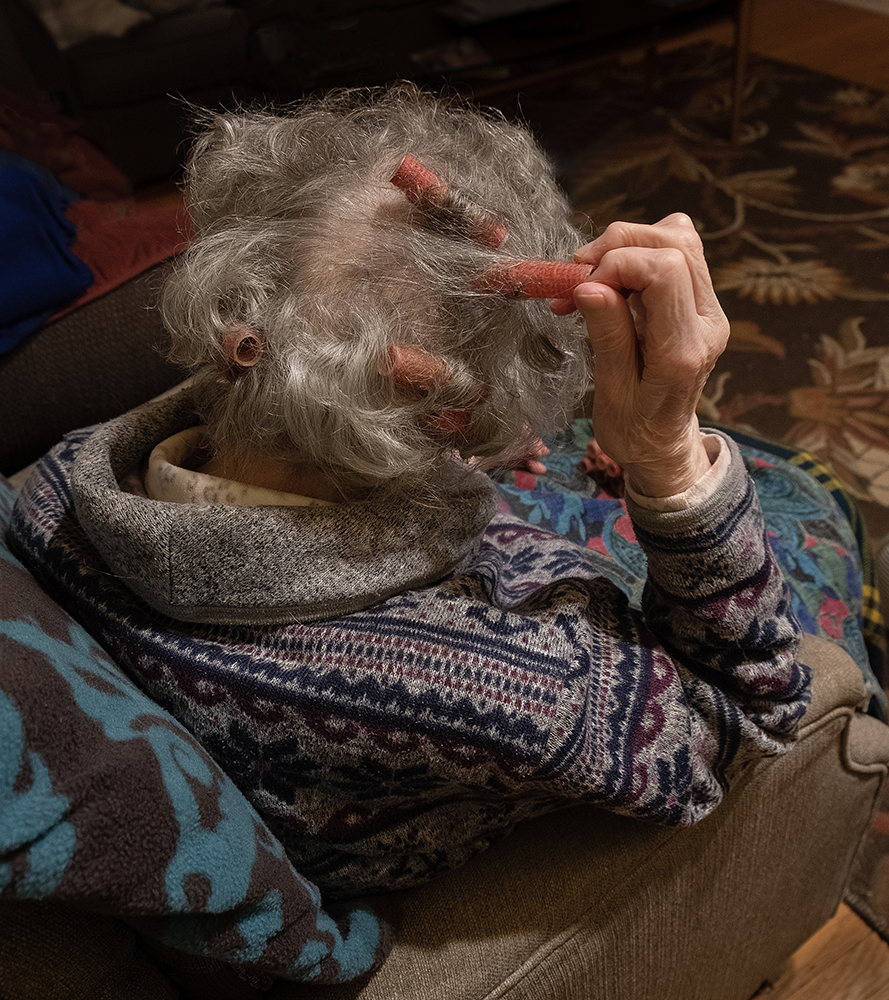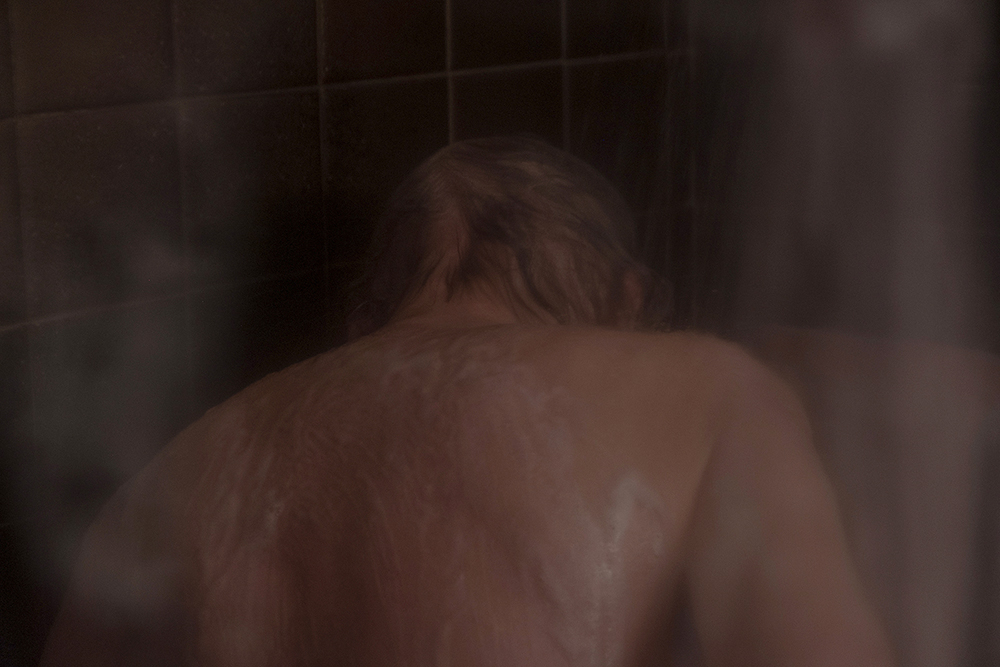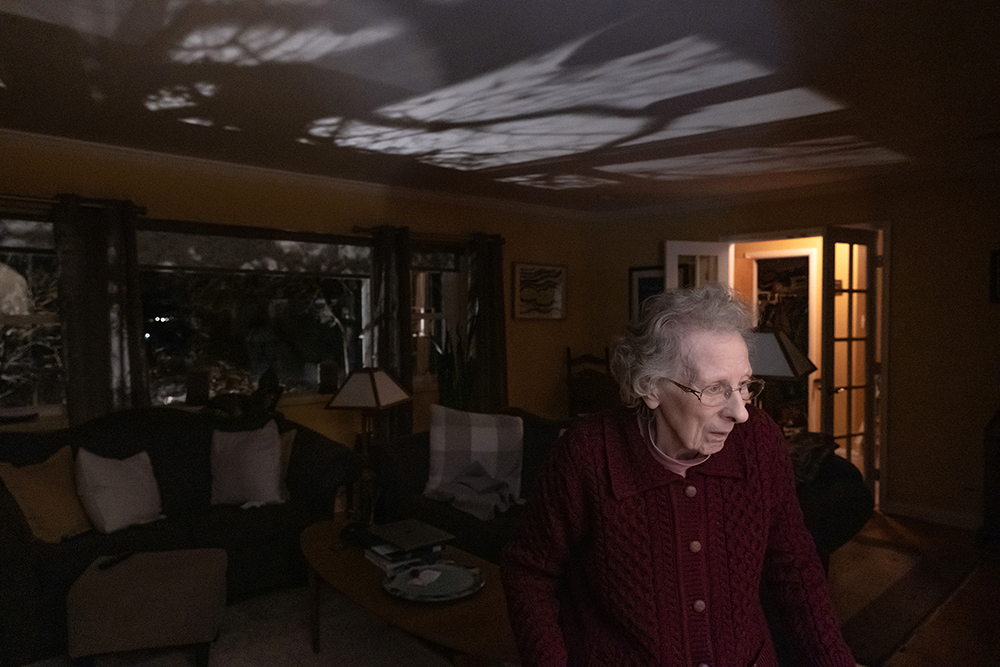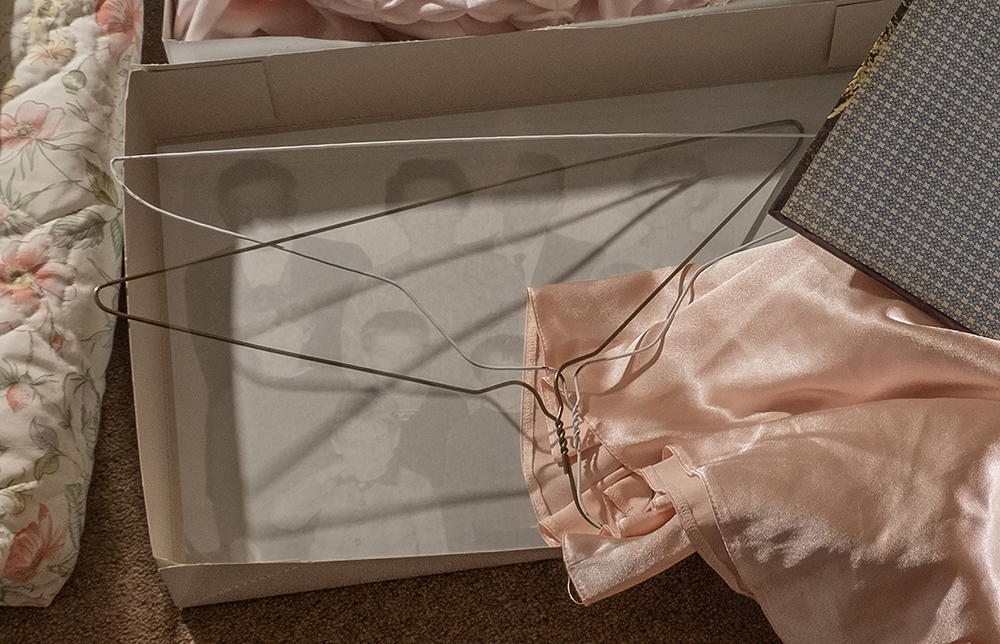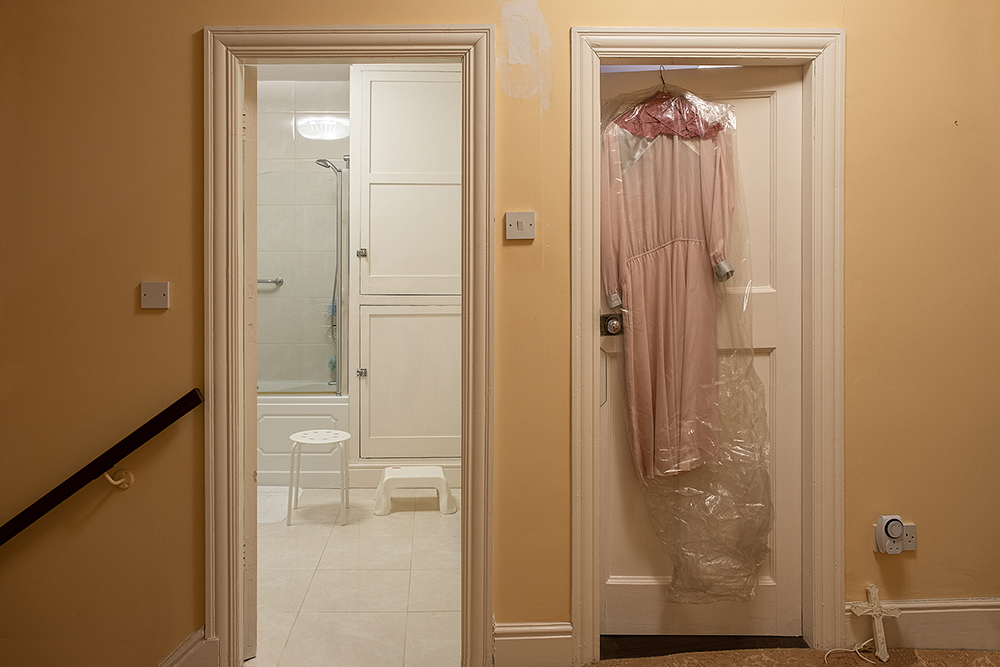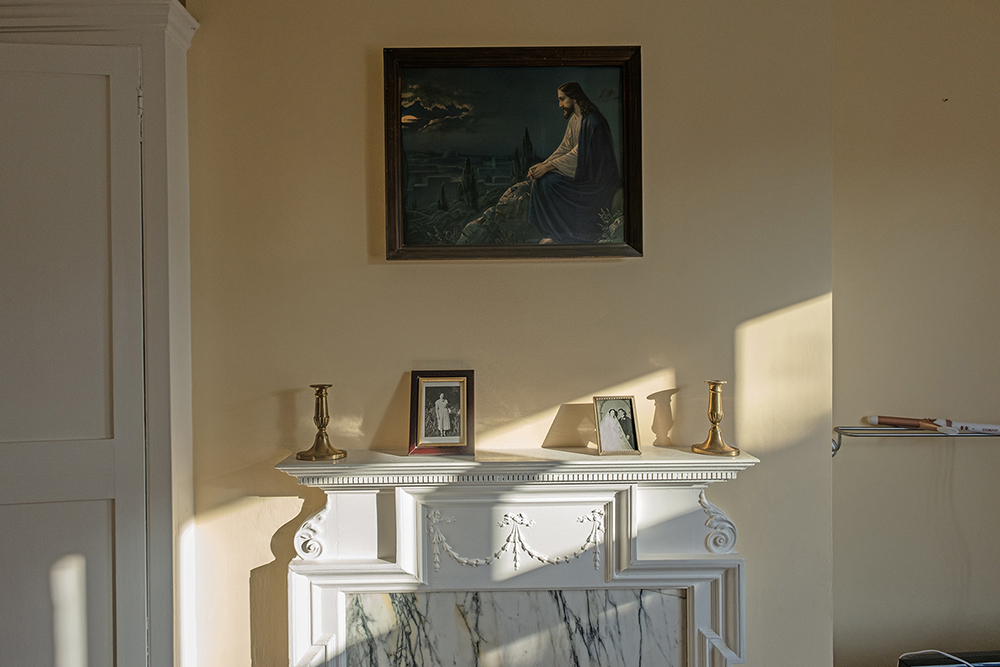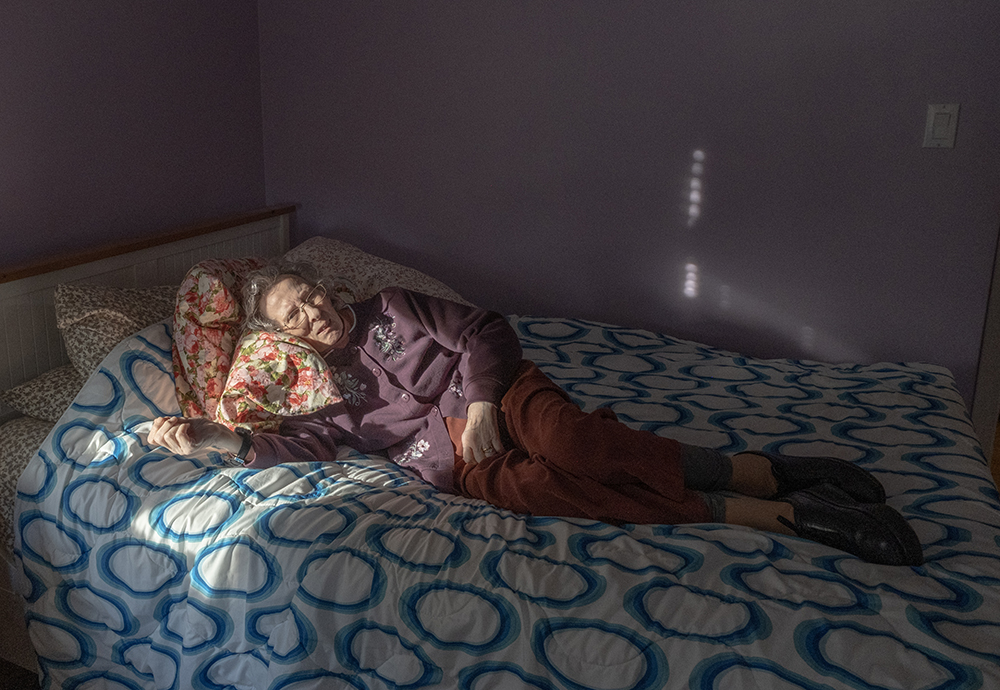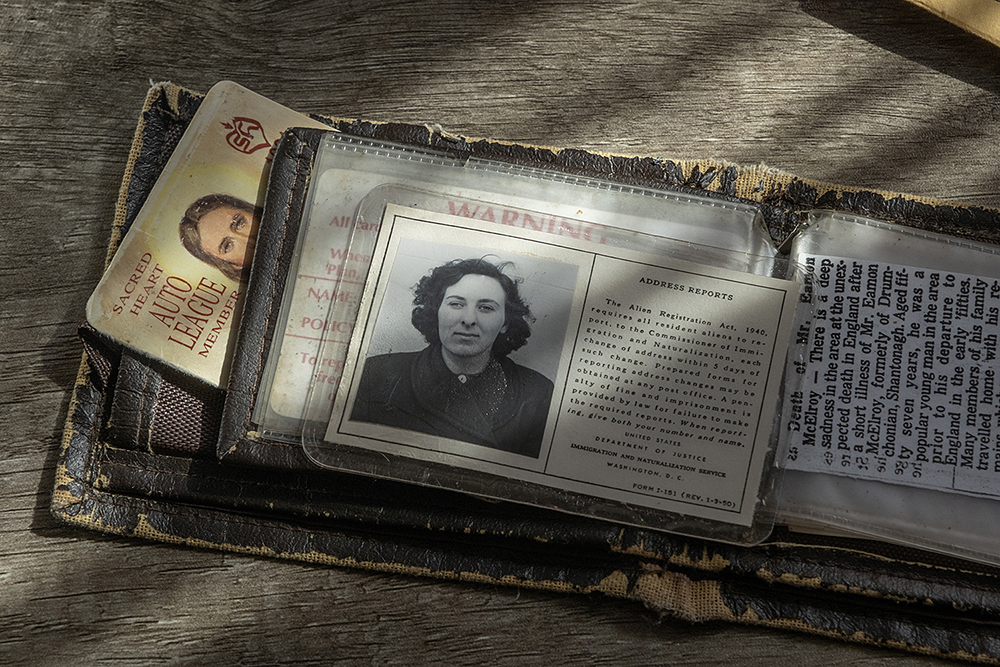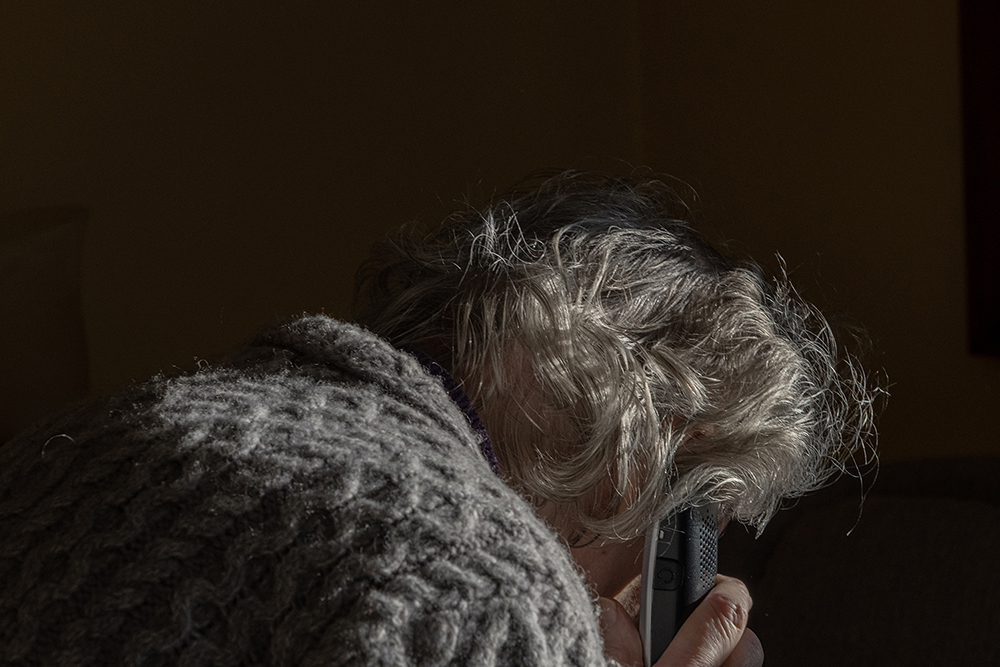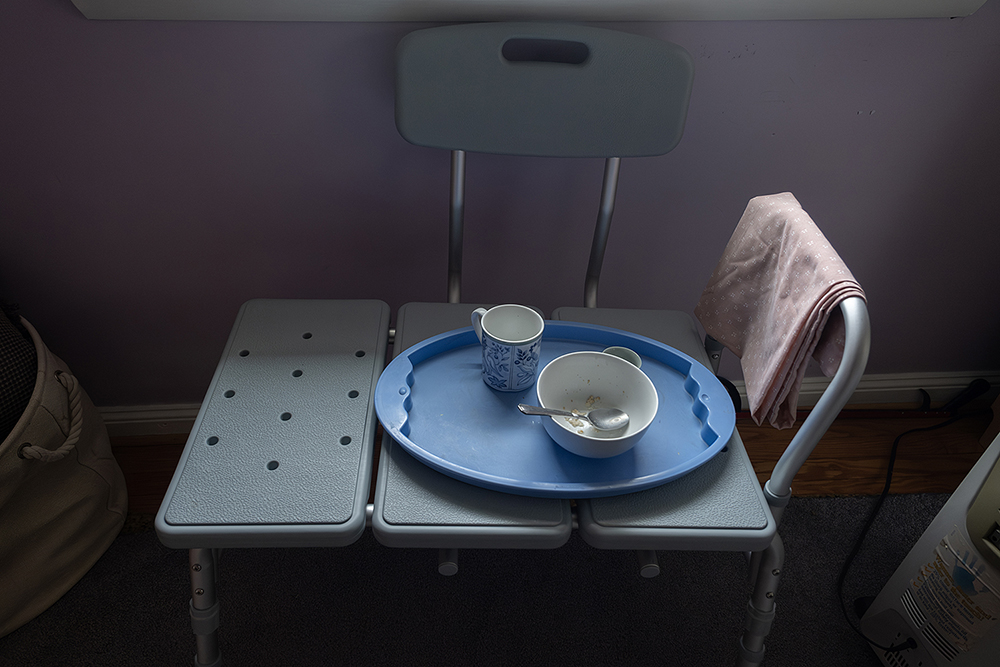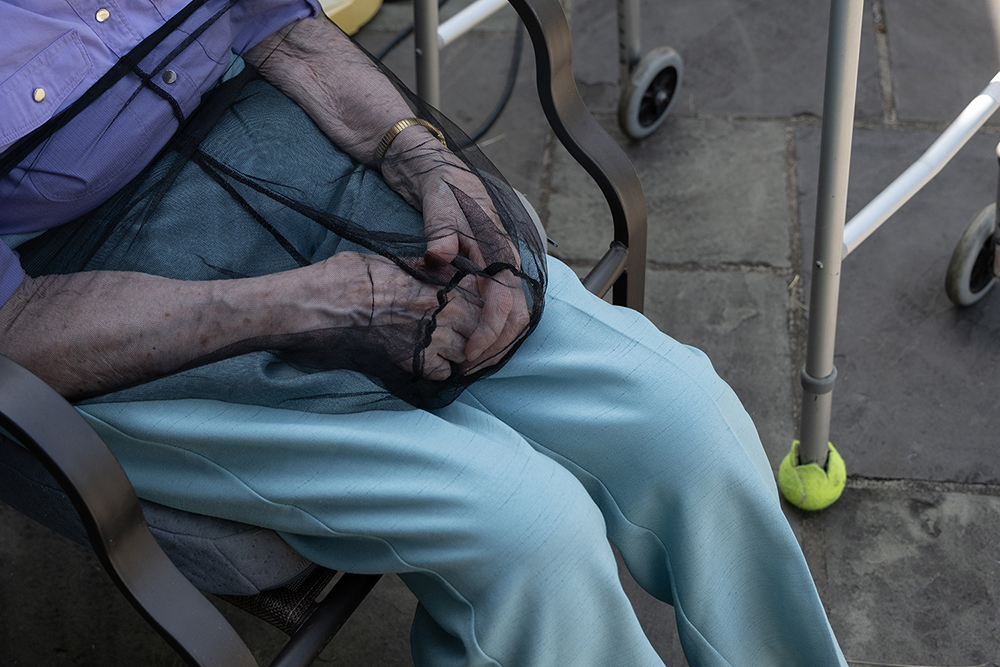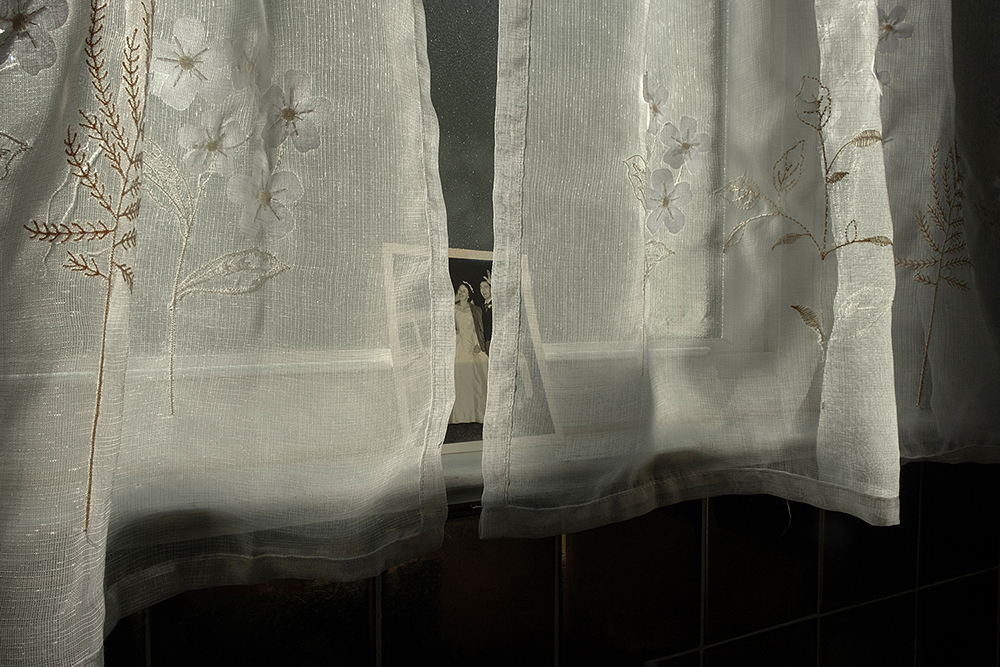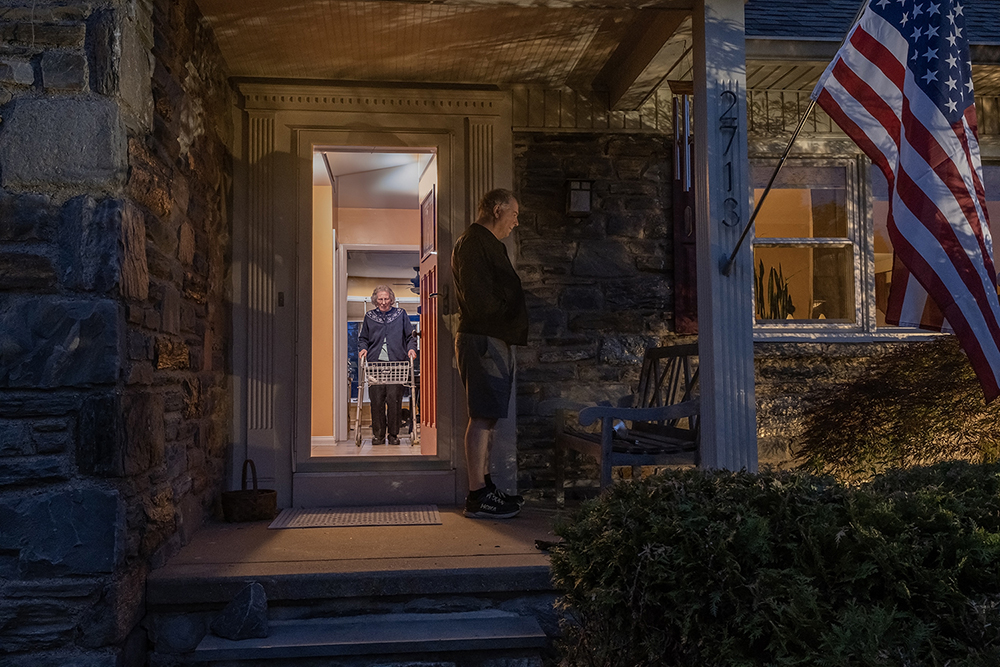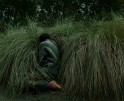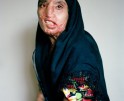Focus on Aging: Patricia McElroy: Between Then & Now
By Beate Sass and Ruth Steinberg
When we invited artists to respond to our call for projects about aging, little did we anticipate that every photographer who submitted would be highlighting their parent’s story. This should not have come as a surprise. Statistically, we are living longer than previous generations, however, our social and health services have not caught up to this reality. The impact of this omission is that the care for our elders has fallen increasingly to their children to oversee or manage hands-on themselves. Although our experiences in photographing our loved ones are varied, one commonality we shared is that we became caregivers, to various degrees, to one or more parents. We also recognized that as the end of life neared, the time spent with our parents was even more precious, and yes, at times challenging and frustrating as we navigated a world of elder care that is tragically under-resourced.
People are living longer and healthier lives, yet elders often experience physiological changes in vision, hearing, mobility, and cognition which can lead to a loss or reduction in capacity. How we define capacity can be more generous than just considering the losses. Assistive devices, such as hearing aids and walkers, specialized senior programs, and hiring direct support professionals, enhance capacity and the enjoyment of life. We’ve witnessed many of our parents adapt to quieter pleasures and simpler joys, which gives those of us who support them an important lesson on how aging can still offer delight, no matter what stage of life one is in.
As photographers, we can show aging in all its expressions: there is no “one size fits all.” This series of five projects honors our parents, those still with us, and those who have passed. We celebrate how they lived, and how they continue to embrace life, despite their losses and challenges.
Patricia McElroy is an interdisciplinary artist, photographer, and designer. Patricia’s photography primarily explores themes related to belonging, memory structures, and cultural identity, with a focus on the connections between the past and the present.
Her work has been exhibited nationally and internationally, with notable recognitions and awards, including Critical Mass finalist in 2023, top honors in The Pollux Awards 2023, and honorable mention at The Julia Margaret Cameron Awards 2023. She has had work chosen for numerous juried exhibitions including the Royal Ulster Academy and Royal Hibernian Academy in Ireland in 2023. She also received Honorable Mention in Photographer of the Year 2023, All About Photo, and her series Between Then & Now has been showcased in All About Photo in 2024.
Her photographs are held in the permanent collection of The Art Council of Northern Ireland and in private collections nationally and internationally.
Instagram: @gillarua
Between Then & Now
“Your mother is your first home and that’s why we’re always trying to return to them”. What My Mother and I Don’t Talk About – Michele Filgate
As I walk past Mom’s bedroom, I see light seeping from beneath the door, which means the window shades have been raised. I peek in to see her dressed, hair in curlers, face powdered, but asleep on her lazy-boy covered with a large throw, her rosary in her hand and her tissues beside her on the wide armrest. Her morning routine takes up to 1.5 hours. It’s 7 am and I have no idea what time she got out of bed. Considering that I feel like I know and can predict her every move, it’s an odd feeling when she does something that surprises me. Lately, these moments have become more frequent.
Six years ago, my mother came from Ireland to visit, and it became evident that she could no longer live on her own. However, at 93, despite her near blindness, physical struggles, and dementia, she remains remarkably resilient.
As I witness her challenges and juggle my role as her caregiver, time has taken on a profound significance for both of us. It shapes our daily routines in unique ways. She frequently marks time throughout her day as she lives in the present, with fleeting thoughts of her past. I grieve for the mother she once was, fearing that my memories of her ‘before’ will fade under the weight of her current condition.
Our relationship, always close, is rooted in a time when actions carried more weight than words. While making my mother the focus of a series of images was a struggle it has become an unexpected gift. Dementia has stolen her usual sources of joy, but surprisingly, despite her past reluctance to be photographed, she now enjoys this shared process, transcending the caregiver-patient relationship that has become the norm.
Though she can’t see the images, her willingness to participate lets me depict her experiences with sensitivity and depth. My images strive to reveal the essence of her life, capturing the present moment while delving into complexities beneath the surface, creating a dialogue with life’s interconnected layers.
Interview with Patricia McElroy
By Ruth Steinberg and Beate Sass
Can you tell us a little bit about your mother? Where did she live, before moving to the US to be with you? What were her habits, her work, her relationships like?
My mom was born in Ireland and at the age of 20 in 1950 she immigrated to the US, following in the footsteps of her sister and many other relatives that had gone before her. She met and married my father also Irish, had 4 children, and moved back to Ireland in 1967 where she continued to live for the next 50 years. My dad was the storyteller and my mom was his most adoring audience member. It was endearing to watch him tell a story for the umpteenth time and watch Mom as if it was the first time she heard it. She and my father had a few businesses over the years including a pub and a grocery store. Mom was the backbone of the business but she would probably describe herself as dad’s support rather than his partner. She was social and had friends but mostly from my father’s circle. She also spent more time parenting 4 kids than my father so she didn’t have much play time for herself. The phone seemed to mostly be her way to socialize, it connected her to the world outside of work and parenting. In later years when both parents retired my dad got Alzheimer’s and my mom cared for him for 10 years before he passed.
How long have you and your mom lived apart? What was the adjustment for both of you in living together after all these years?
I was born in the US and raised in Ireland. I returned to the US when I was 24 and lived here 30 years before my mom ‘moved in’. For a couple of years, she would tell people she was going back and that she couldn’t stay. It was a fall that prolonged her visit and it became clear that it would be best if she didn’t live on her own anymore. At first, there wasn’t much of an adjustment. We got on very well together and my husband and mom also got on well. As her dementia and physical disabilities have grown over the past 2-3 years it has become more of a challenge as our lives have become more restricted.
What does your usual photographic practice concern itself with? Any particular genres? What adjustments, if any, did you make to create this series with your mom?
As Michele Filgate says in her book, What My Mother and I Don’t Talk About, “Your mother is your first home and that’s why we’re always trying to return to them.”
I am drawn to the idea of ‘family’ in its many forms. Family and home have become synonymous to me and exploring connections between the present and past, has always held my interest. Another facet of this is the idea of ‘place’ as home and how surface has the ability to hold memory and experience. Histories leave impressions in the land, structures, and of course people. Evidence of these histories is sometimes visible and other times permeates the atmosphere. As I examine my images and delve into archival family photographs, the moments that look back at me reveal connective tissue between the past and the present as they explore themes of belonging, memory structures, and cultural identity.
In what ways is your mother your collaborator? How do you navigate the shared experience of creating together?
I didn’t realize that my mother was my collaborator until recently. I was trying to make an image of Mom with her older sister and having a hard time because her sister is not comfortable in front of the camera. It made me think about the many sessions I had already had with my mother where she would so willingly comply with my requests to change or adjust her position for an image. It hit me that my mother was not just the subject, she was also my partner in this and that during those times our relationship was not caregiver/patient or me as the mother and her as the child, but equal collaborators. I was quite emotional at this realization because I really didn’t think we would ever be in that situation again. Our sessions together are not usually planned or orchestrated except by the available light, but when I ask her if I can take her picture I notice her attitude changes, her dementia takes a back seat to the task at hand and she focuses on what I might need her to do.
What are the issues or tensions that you are confronting as you create this work? Are there boundaries that you will not cross?
As I make this work, I am constantly asking myself if my images are respectful to my mother. There are boundaries I won’t cross because I am very conscious of what she would not be comfortable with and so I seek to reveal without regret.
How do you share the images that you have made with your mom, given her blindness? I have dealt with a similar situation in creating a body of work with a blind neighbor. The trust is so important.
When she had more sight and could see my images of her she thought I was crazy for wanting to take pictures of her. My response was to tell her how enjoyable this time together was and then she was ok with it. She also likes the attention that she gets and the time I spend with her when I photograph her. I tell her about the exposure some of my images have gotten and she is happy for me and pleased that it’s because of her but never one to boast about herself, she doesn’t say much.
Have you determined a point at which the series will be completed? Does it relate to your mom’s ability to collaborate, or her mental capacities?
I haven’t reached that point yet. I feel like I will know intuitively when it arrives.
What have you learned about your mother in making this series? Has your relationship changed since embarking on this work?
As this project has evolved what I have learned has been therapeutic. I worried about making my mom the subject of my project. I started slowly and tried to understand what I was doing and why. Over time I realized that I was capturing my mom in ways that revealed not just her present state but also spoke to me about her personality, our changed roles, and my relationship with her, and perhaps most revealing to me is that this process has been a way of grieving the loss of who she was and accepting who she is.
Beate Sass is a photo-based artist whose imagery is inspired by the Southwest region where she grew up and her experience as a mother and advocate of a daughter with a disability. Beate is not only drawn to capture the essence and beauty of her subjects but to also utilize her knowledge of visual storytelling to highlight and amplify the voices of those who are often overlooked. Most recently, Beate has turned her camera to the natural world and seeks to capture the peace and beauty found in wild places.
Beate’s photography has been featured in solo and joint exhibitions including The Museum of Contemporary Art of Georgia and the Southeast Museum of Photography. Her projects have been published in Lenswork, Oxford America, and South x Southeast Photomagazine. She has also self-published two zines and created a large-scale installation that was displayed in her hometown of Decatur, Georgia.
Instagram: @beatesassphoto
Ruth Steinberg is a photo-based artist who uses the camera as a tool to open doors to conversation, uplifting the voices of her subjects. Through visual storytelling she examines facets of dignity, resilience, and presence, with particular focus on the elderly. Her work has been shown across North America and internationally including the Karsh-Masson Gallery in Ottawa, LACP: Centre of Photography in California, PhotoPlace Gallery in Vermont, and FotoNostrum, Mediterranean House of Photography in Barcelona. In 2017, as part of an intergenerational chain of mentorship, Steinberg was selected to exhibit in Continuum: Karsh Award artists welcome a new generation. In 2022 she received the first place for the Figureworks Exhibition and in 2023 she was a Photolucida Critical Mass 200 finalist.
Instagram: @ruth_steinberg_photographs
Posts on Lenscratch may not be reproduced without the permission of the Lenscratch staff and the photographer.
Recommended
-
Gadisse Lee: Self-PortraitsDecember 16th, 2025
-
Scott Offen: GraceDecember 12th, 2025
-
Izabella Demavlys: Without A Face | Richards Family PrizeDecember 11th, 2025
-
2025 What I’m Thankful For Exhibition: Part 2November 27th, 2025
-
2025 What I’m Thankful For Exhibition: Part 3November 27th, 2025

